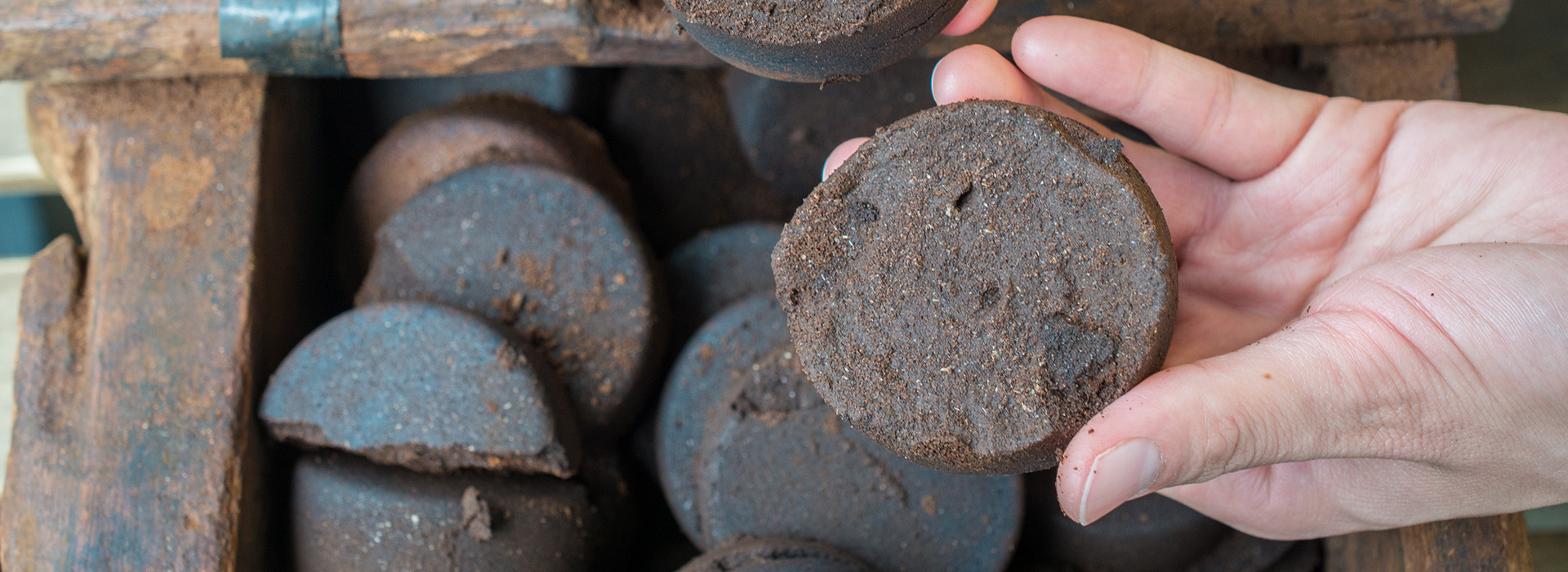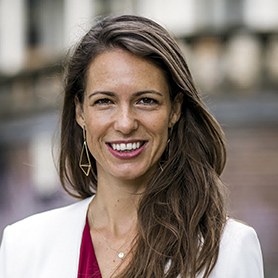Maayke-Aimée Damen: Meeting Circular Economy Ambitions
Working for an NGO and attending United Nations’ sustainability meetings while still in her teens is testimony to Maayke- Aimee’s commitment to the environment. Now, as Director Circular Economy at the World Business Council for Sustainable Development (WBCSD), she talks to dss+ about why systemic change is essential and scaling up to meet circular economy ambitions is the next big challenge.


Maayke-Aimée Damen
Director Circular Economy at the World Business Council for Sustainable Development (WBCSD)
Q.
Your involvement in sustainability began at an early age. How has this influenced your current role?
For me, sustainability wasn’t an epiphany; it was always there. Growing up in the Netherlands, I was very driven and wanted to make an impact. So, at the age of 16, I began working for a non-governmental organisation (NGO) where I could learn and make a difference. When the Dutch government changed funding rules for many big NGOs, I thought that a role in policy could be more influential long term. Shortly after this, I was selected as a Dutch delegate on sustainability at the United Nations (UN). It was an amazing experience as I was still in my teens, but having the ability to attend these meetings meant I saw firsthand the relationship between government policy and business. It became clear that while business is part of the sustainability problem, it is also a big part of the solution. So I began to focus on how businesses can aid efforts to achieve sustainability goals and explore how to develop more circular business models that keep products and materials continuously in use rather than ending up in landfills.
Q.
What influence have you had on improving the frameworks that allow businesses to realise their sustainability ambitions?
For sustainability to succeed, it needs systemic change, but if you have a framework that holds things in place, change cannot happen. The tax system, for example, is a vital part of the framework businesses operate within, so I conducted the first study for the Dutch government on how to change the system from taxing labour to taxing resources. Called Ex’tax, it works by putting a price on natural resource use and pollution to provide incentives to save resources and the environment. By using the revenues to lower the tax burden on labour and increase social spending, it enables job creation and supports those who need it most. However, in terms of which resources to tax, there wasn’t much information on which materials went through our economy and the effect they had on our environment. So I developed the ‘materials passport’, which gives an overview of the different materials used in products like phones and laptops. Comparable to an ingredient list on food items, the passport helps businesses track and trace the provenance of materials and makes it much easier for companies to assess, among other things, the business case for recycling. To incentivise companies to collect this data, I founded the Excess Materials Exchange (EME), which we describe as a dating site for materials and products. Supply and demand of materials is matched, meaning waste of one company is used as a resource by another company. So there is a financial incentive to reuse waste instead of it going into landfills. However, to achieve scalability on waste exchange, systemic issues need to be addressed. This includes accounting for who to credit for the carbon emission reductions or how to incorporate the circular economy properly into financial instruments and taxonomies.
"For sustainability to succeed, it needs systemic change, but if you have a framework that holds things in place, change cannot happen."
– Maayke-Aimée Damen, Director Circular Economy, World Business Council for Sustainable Development (WBCSD)
Q.
How can we encourage greater participation in the circular economy?
Good sustainability initiatives are already in play and evolving legislation is strengthening existing efforts to achieve circularity at scale. The sooner companies begin the transition to become circular, the easier the transition usually is. A lot of work is already underway, so I would encourage companies to explore current schemes they can join and tools they can use. For example, WBCSD has launched it’s own framework to help businesses called Vision 2050: Time to Transform. In addition, we have developed an easy tool to measure circularity in collaboration with around 1,600 companies. Called Circular Transition Indicators, it can be applied to products and business units to help companies define hotspots and subsequently conduct a strategic analysis of steps forward. There is also a lot of work underway around Scope 3 emissions and how to measure these throughout value chains as well as standardise reporting. Together, all these efforts are speeding up the transition and encouraging greater participation.
"There are new technologies that help turn that waste into value, such as turning coffee grounds into bioplastics, biofibres or water filters, or repurposing tulip heads into pigment for paint."
– Maayke-Aimée Damen, Director Circular Economy, World Business Council for Sustainable Development (WBCSD)
Q.
How is technology pushing the boundaries to develop and enable the circular economy, and what’s the next big challenge?
When you want to exchange secondary materials at scale, you need to know a lot of information about quality, timing, quantity and location of those materials. However, product and material information is often also very sensitive and proprietary information. Companies cannot just disclose this on a global marketplace. So, if we want to exchange materials at scale, we need to find ways to bridge the gap between the need for transparency and the need for protecting IP and companies’ competitive advantages. This is where new technology is really paving the way. For example, blockchain protocol enables companies to share details with selected people under certain conditions without revealing sensitive information. This type of technology can really help connect the dots on creating a circular economy. Then there are new technologies that help turn that waste into value, such as turning coffee grounds into bio-plastics, bio-fibres or water filters, or repurposing tulip heads into pigment for paint. These technologies help maintain the value of all the initial energy that was put into creating that material, avoid the cost of disposal, plus create additional value by giving it a second life. There are many success stories like these, and now it’s a case of working on leveraging this potential at scale.
"Sustainability challenges are not the same for every company. However, we all have a role to play and sharing knowledge, ideas and innovation can help smooth the path for everyone."
– Maayke-Aimée Damen, Director Circular Economy, World Business Council for Sustainable Development (WBCSD)
Q.
For companies looking to get involved in the circular economy, what’s a good starting point?
The circular economy is still an elusive concept for many, especially since adoption has implications for all aspects of the business from design right through to waste management, including different ways of working with the supply chain. So a good starting point is to assess the company’s current level of circularity by using available tools such as WBCSD’s Circular Transition Indicators. Using this information as a benchmark, companies can then devise a strategy on how to become more circular and determine goals such as whether they are trying to achieve zero waste, zero emissions or both. For some companies, it might be most impactful to achieve lower carbon emissions through design improvements. For other companies, different procurement procedures that help to ensure the sustainability of their natural resource use will be of greater benefit. Of course, changing ways of working poses challenges, as developing a circular economy involves the whole internal structure of an organisation, supply chain and the external legal and accounting frameworks that apply. Moreover, sustainability challenges are not the same for every company. However, we all have a role to play and sharing knowledge, ideas and innovation can help smooth the path for everyone.